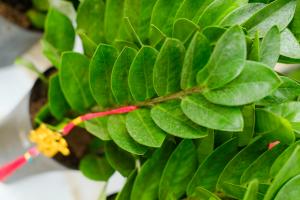What are Aquatic Plants?
Aquatic plants, as the name suggests, are plants that live submerged in water, either fully or partially. They grow in various aquatic environments such as lakes, ponds, rivers, and even oceans. These plants play a vital role in maintaining the health and balance of aquatic ecosystems.
Why do Aquatic Plants Filter Water?
Aquatic plants filter water to maintain its quality by removing pollutants and excess nutrients such as nitrogen and phosphorus. The absorption of these nutrients helps prevent the growth of algae, which can deplete oxygen levels in water and harm fish and other aquatic life. This process is called phytoremediation and is one of the key benefits of using aquatic plants to filter water.
How do Aquatic Plants Filter Water?
Aquatic plants filter water through their roots, leaves, and stems. The roots of these plants are specialized structures that can take up nutrients and pollutants from the water. The leaves, on the other hand, provide a large surface area for the absorption of nutrients and the release of oxygen. The stems of aquatic plants transport water and nutrients between different parts of the plant.
In addition, some aquatic plants have the ability to capture sediments and suspended particles from the water. They act like filters, trapping debris and pollutants within their tissues, preventing them from moving downstream and contaminating other ecosystems. In this way, aquatic plants help to reduce soil erosion and water pollution, providing a host of benefits to both wildlife and humans.
Types of Aquatic Plants that Filter Water
There are several types of aquatic plants that are commonly used to filter water in various aquatic environments. Some of the most popular varieties are:
Water Hyacinth: This floating plant with its beautiful purple and blue flowers is an excellent absorbent of excess nutrients from the water.
Duckweed: This tiny plant with its round, light green leaves is an excellent remover of ammonia from the water.
Water Lettuce: This floating plant with its large, green leaves helps to absorb excess nutrients from the water and provides shelter for fish and other aquatic creatures.
Pondweed: This submerged plant with its flexible stems and oval-shaped leaves can absorb high amounts of phosphorus and nitrogen from the water.
Cattails: This tall plant with its long, sword-shaped leaves and brown seed heads is great for removing pollutants and sediments from the water.
Aquatic Plants and their Importance to the Environment
Aquatic plants are not only important for filtering water but also for maintaining the ecological balance in aquatic environments. They provide food and shelter for fish and other aquatic creatures, contribute to the overall biodiversity of aquatic ecosystems, and help to stabilize shorelines, preventing soil erosion and loss of habitat.
Moreover, wetlands and other areas with aquatic plants act as natural filters, improving water quality, and acting as buffers against natural disasters such as floods and storms. These natural systems also provide recreational opportunities for people through activities such as fishing, boating, and birdwatching.
Conclusion
Aquatic plants are vital to the health and well-being of aquatic ecosystems. They filter water, help to reduce pollution, and provide important ecological services that benefit both wildlife and humans. It is essential to protect and conserve these valuable resources to maintain the ecological balance and ensure a sustainable future for our planet.

 how many times do yo...
how many times do yo... how many planted tre...
how many planted tre... how many pine trees ...
how many pine trees ... how many pecan trees...
how many pecan trees... how many plants comp...
how many plants comp... how many plants can ...
how many plants can ... how many plants and ...
how many plants and ... how many pepper plan...
how many pepper plan...
































